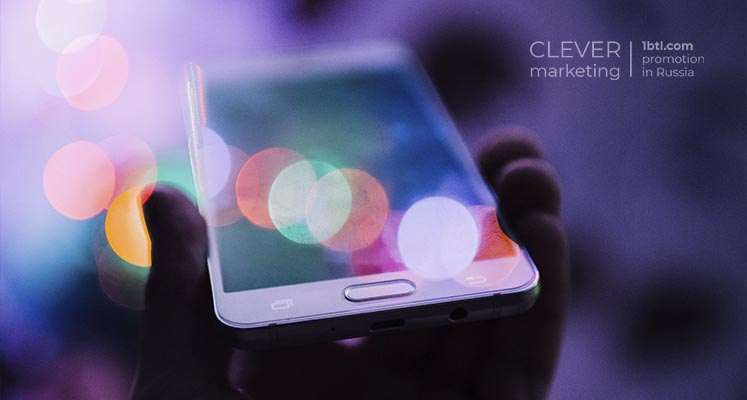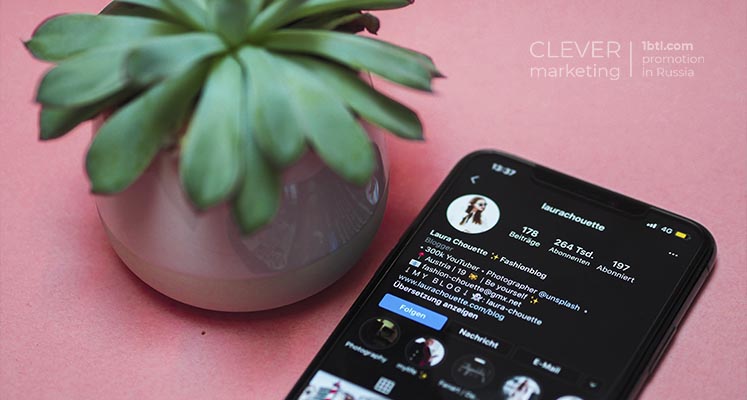Russian Social Media Trends 2021
2020 was not easy for marketers, but we managed, and in 2021 a brave new world will be waiting for us. At least, I want to believe it. It’s time to write my regular SMM trend forecasts for the coming year.
The fundamental factors in the further development of marketing in social networks will be both the social changes that have occurred this year, and the emergence of new technologies and ways of consuming information.
Socially oriented marketing
The outgoing year has revealed social problems from a new side. Now it is important for companies to talk not only about the product and the usual global problems, but also about new important topics for society. Such as equality, education, mental health, finance, changing food trends, etc. Brands should be more sensitive to social issues in all aspects of their communication. This means becoming socially conscious and focusing marketing on your mission. Mission-oriented marketing campaigns will allow you to communicate with the audience on an emotional level, creating a stronger resonance with the brand.
So, many brands have joined the support of Black Lives Matter and issues of protection against coronavirus, and this is just the beginning. There will be more and more such campaigns. Moreover, brands are beginning to openly conduct a dialogue with users on topics that were previously taboo in communication.
Users will expect such communication, understanding, compassion and help from companies in solving their psychological needs. They will associate the company not only with the product being sold, but also with a certain work for the benefit of humanity.
New formats and the evolution of social networks
The incredible boom of TikTok shows that users are tired of the old communication formats, are waiting for new ones and are ready to actively use them.
At the same time, classic social networks cannot lose the market and have all the opportunities to quickly adapt to changing trends and consumer habits. They will introduce similar formats, adding new functionality to them and making them more attractive to users and brands (We recall Vine). In addition, they will develop their own new interaction formats, such as Facebook Horizon or voice tweets.
Brands should master new formats right now in order to seamlessly integrate them into classic social networks and into their communication in the future.
“Quick” videos
There is no need to prove that video is the most popular format in social networks. However, not everyone could create long videos. In addition, the general way of information consumption has accelerated, so short videos in different formats have come to the rescue. Since the appearance of storis, they have received an evolution into the new formats TikTok and Reels. These formats are already showing their popularity, which can be judged both by the dynamic growth of content, and by the advertising activities of major brands in TikTok and Reels (MAC Cosmetics, NBA, Louis Vuitton, Sephora and others).

Easy to create, easy to watch is a trend that has only intensified due to the global crisis, the rules of social distancing and the transfer of employees to work from home, which has led to an increase in the number of people creating and consuming content on smartphones.
For brands, this trend should become the main one in the next 12 months. If you want to be ahead of everyone and keep up to date with events, it is very important to use new features and think about the demand for “fast” content.
“Remixing” content
Another new trend that will develop in new content creation formats is ”remixing”. This is an approach that allows and encourages taking existing formats, templates or ideas and reworking them to express the user’s personality and ideas. It appeared and is growing thanks to the same TikTok and Instagram Reels. The trend is gaining momentum.
Even now, we can say that masks and stickers in Instagram are suitable for this approach, among other things. In the future, there will be even more opportunities for co-production, as brands will provide users with templates for creating their content. This will allow us to establish more organic connections between companies and consumers.
The marketing industry can expect that 2021 will bring even more opportunities for creating remixes, when brands will interact with a new audience and create additional content that will allow them to stand out.
Live broadcasts
Thanks to the pandemic, the format of live broadcasts has become even more popular and attractive for users. Facebook Instagram is currently streaming one in five videos live, and 1 million Instagram users watch live videos every day. Other social platforms, such as Twitter, YouTube and even LinkedIn, have also picked up the trend for “live” video.
One of the main reasons why live video has become so popular for both brands and users is the high level of interaction and engagement that it causes. Live video has the highest level of engagement among all types of content, allowing the audience to interact with brands and companies on social networks in real time. Users got the feeling of being able to influence the action and participate in it, rather than passively watching. This corresponds to the demand for instant satisfaction and the desire to create content together with the brand.
Conversational marketing
The development and evolution of voice interaction and control technologies creates new communication formats on the market. It has become easier for users to ” Talk”, and marketing has received a new channel and ways to interact.
Previously, voice was important for communication, and calls significantly outweighed the use of text messages. However, currently 68% of consumers write more than they talk on their smartphones. However, voice communication, search, notes, audio messages, assistants, and even voice tweets are returning to the marketing industry. The audio format has become more perceptible, which has also served the development of podcasts.

We will be waiting for new formats for creating, searching and delivering information using voice. Businesses need to be prepared so that the user can receive and find information about products and company news in a voice format.
AR
The trend that has appeared for a long time has received a new impetus with the advent of Spark AR for creating virtual “masks”. Brands have already started using augmented reality in promotion, testing various approaches. AR has become not only a playful and interactive way to attract attention, but also allowed us to bring a new additional experience of user interaction with the product and brand.
The ability to interact on social networks is what sets the environment apart from others, and AR is the next evolution of this interaction. Next year, we are waiting for even more engaging activities, games and various effects with the integration of brands.
At the same time, the ease of creating masks and the emergence of 3d modeling technologies in new smartphones will affect the overall improvement of user content. Therefore, it will become more difficult for brands to “surprise”.
Authentic content
Speaking of masks and content in general, brands will have to find a balance between improvements, “authenticity” and the quality of the materials posted.
This forecast is accompanied by two factors:
First, recent research shows, in principle, that opinion leaders and brands get more engagement by posting raw, “truthful” content. The more authentic the post looks, the more users express their approval for it.
Secondly, Instagram has already faced accusations of an increase in the level of depression among young people due to the fashion for retouched and unnatural photos, which led to a ban on filters for improving the face and masks that simulate plastic surgery.
Now the social network itself promotes the trend for real content without processing.
Taking care of the cleanliness of social networks
The growth of digital disinformation, account tagging, bots are some of the important problems that social networks are currently solving.
Social networks have always blurred the boundaries between fact and fiction-from the heavily edited lives of some instagrammers, fake reviews and posts to parody Twitter accounts. The health crisis caused by COVID-19 has highlighted the problem of misinformation. Society is facing an uncertain future, and this uncertainty has created a hotbed of false stories leading to life-changing decisions.
The marketing industry can expect that next year will be a turning point in this direction, thanks to the technical development of algorithms and the social demand for” purity ” of content. Brands should be prepared to spend more resources on checking content and refuse to use any cheating and bots. And in case of violation of the “rules”, be prepared for sanctions from social networks, which will only increase.
Control over bloggers
There are more and more bloggers, now it is already a serious industry in which marketing has taken its logical place. Social networks see this trend and do not want to lose their budgets. Therefore, there are tools such as “Branded Content” on instagram.
And these are only the first attempts to take this market under financial control.
New integrated tools for advertising interaction between bloggers and brands directly on the sites will also be introduced.
Such tools will become more profitable for brands at the initial stage.
At the same time, we can expect the emergence of new ways to control and track advertising from bloggers and ban it, for various reasons.
Stores in social networks
The approach to online shopping is changing, people want to buy in a few clicks and not go from social networks to other sites. This affects both the distribution of new sales tools “Shopping tags”, and the general approach to filling social networks. Now, getting to your profile, the user should understand in a few seconds what the company is selling, get a quick response and easily close the purchase without leaving the application.

Facebook Instagram stores, ASOS, Clothing the Gap, Fy, and Levi’s have already started selling their products through Instagram, Facebook, and even Pinterest catalogs.
The conversion funnel will be simplified as much as possible, and social networks will become a “Shop on the couch” of a new era.
Personalized marketing
With the appearance of an increasing number of companies in social networks, users have become more selective about content. As a result, social networks have introduced personal feeds, and brands have begun to include personalization in their marketing strategies on social networks in order to surprise and attract users.
It is social networks that allow you to get large amounts of demographic data, previous purchases and content preferences.
Based on this data, personalized advertising, offers, content and integrations are already being created, allowing you to generate personal videos and photos with brand integration.
Next year, the amount of user data will increase and new tools for personalized marketing will appear. So if you don’t collect your customers ‘ data yet, at least connect Facebook pixel, which will do it for you.
Free promotion will die
Social networks have thoroughly studied the algorithms of user behavior, gained access to all the necessary information and increased the technical resources for tracking actions. Now they care about the cleanliness of the sites, because they see the request of society for this. In addition, the elimination of gray promotion methods will allow sites to receive even more resources from classic advertising tools.
For brands, it also became clear that cheating does not give a high-quality result. Performance indicators have not been measured by the number of subscribers and likes for a long time. Moreover, the use of gray methods can greatly affect the further work with white ones.
Everything is going to the fact that all possible services of “tricky promotion” will finally die. Punitive measures will only increase, and the risks of losing your account will be incomparable with the possible result.